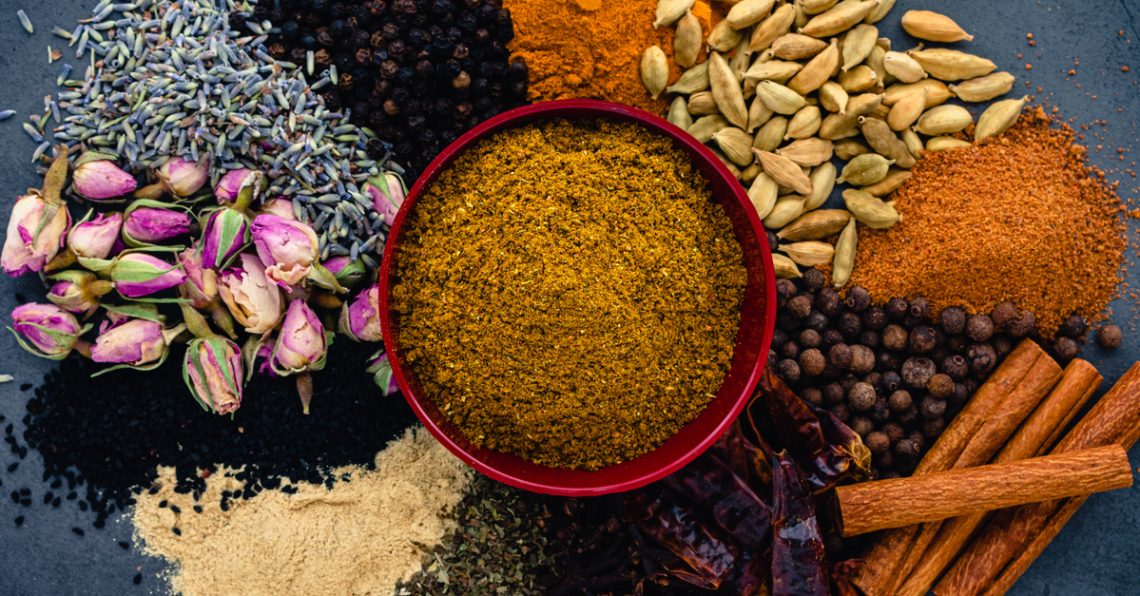
Conjuring Memories with Flavors and Scents
Suppose you simply could not find an ingredient essential to one of your favorite dishes. I raise this question for two reasons: first, because shortages are occurring more frequently these days. Second, because a request from a friend got me thinking about it. My friend asked me to make a special spice blend for a new immigrant family who did not have access to their familiar flavor-enhancer. This blend includes at least 10 different spices (pictured above), some of them difficult to find on today’s supermarket shelves. Further, this family doesn’t have ready access to a store in the first place. It was my pleasure to put together a jar of this spice mix, ras el hanout, and luckily, I was able to find the ingredients in my own pantry. I’m told the family is happy to have received this token of our welcome. They have requested another spice mix, char masala, for kalubi pulao, the traditional Afghan rice dish for which that spice mix is essential. And I’ll be glad to provide it.
Flavors of home
Immigrants face a common problem: access to traditional foods and especially flavors. Picture yourself needing to feed yourself in a new country and culture with different foods, flavors, and traditions. What do you buy to eat and where do you get recipes for what’s available? What if you can’t find mayonnaise, olive oil, catsup, or your usual herbs and spices? While you might be able to cobble together some meals, you’ll eventually yearn for some of those familiar flavors. Or, you’ll create what chef Saquib Keval calls “in-between food” — something new. He describes moving to California and stuffing taco shells with leftover Bolognese sauce or curries. “To this day, that’s what I crave.”
In the novel The Sympathizer by Viet Thanh Nguyen, the main character is a Vietnamese who escaped from Saigon as the North Vietnamese stormed the city at the end of the war. Relocated to California, the character yearns for the taste of nuoc mam, the Vietnamese fish sauce condiment. In the essay Dirty Kitchen by Jill Damatac, a writer and filmmaker born in the Philippines, the author rhapsodizes about Philippine foods and flavors, especially Tinola, a humble ginger-chicken soup. And a story this week in the Los Angeles Times describes ex-pats who moved from California to Portugal and miss their fresh avocados and are unable to find a good Mexican burrito in Lisbon.
Palates developed in the womb
What’s going on here? Turns out, our brains have been creating food memories for us. Neurobiologists tell us that we not only remember flavors, both good and bad, but our olfactory sensors are connected with the hippocampus, which connects those memories to space and time. In other words, flavor memories are linked to both pleasant and less pleasant events in our lives. Furthermore, they are implanted early in life and can even extend into the womb, where the growing baby sometimes reacts to foods eaten by the mother. My sister, for example, can’t stand beans, attributing that distinct antipathy to our mother’s craving for beans when she was pregnant. It starts and ends with the smells that are tied to those memories more than the actual taste of the food. Dr. Rachel Herz, an olfactory scientist, states that smell is tied to emotional memory, and food smells are particularly powerful and drenched in nostalgia. In short, we desire those warm memories of good times in the past.
I have two takeaways from this. First, hearing about a flavor memory is an opportunity to unlock a conversation with a friend. When they remember a food – be it a chicken soup or a burrito or a stew laced with ras el hanout, ask them, “What do you remember?” Why is this particular dish so important and pleasing to them? Then just sit back and listen to the story.
Experiencing other cultures through their cuisine
The other takeaway has to do with my own experiences. I’m interested in trying new flavors and food experiences. That’s why I created my own ras el hanout recipe in the first place. I wanted to taste and smell what folks on the other side of the world experience. Sure, some of these dishes are made from simple ingredients prevalent in their various home regions. But the simplicity can be misleading. People still manage to step out of their comfort zone and put together something complex and intriguing to the tongue and the nose and the brain – not to mention the human in which they are encased. How about joining me in creating your own memory with a new dish? Better yet, tell me the story that it inspires.
To comment, please click on “Read in Browser” or on the headline to view the blog on the website. You can log in and comment at the end of the blog to share your thoughts and start a discussion.





One Comment
Private Salon Suites
Everything is very open with a precise description of the issues.
It was definitely informative. Your website is very useful.
Thank you for sharing!